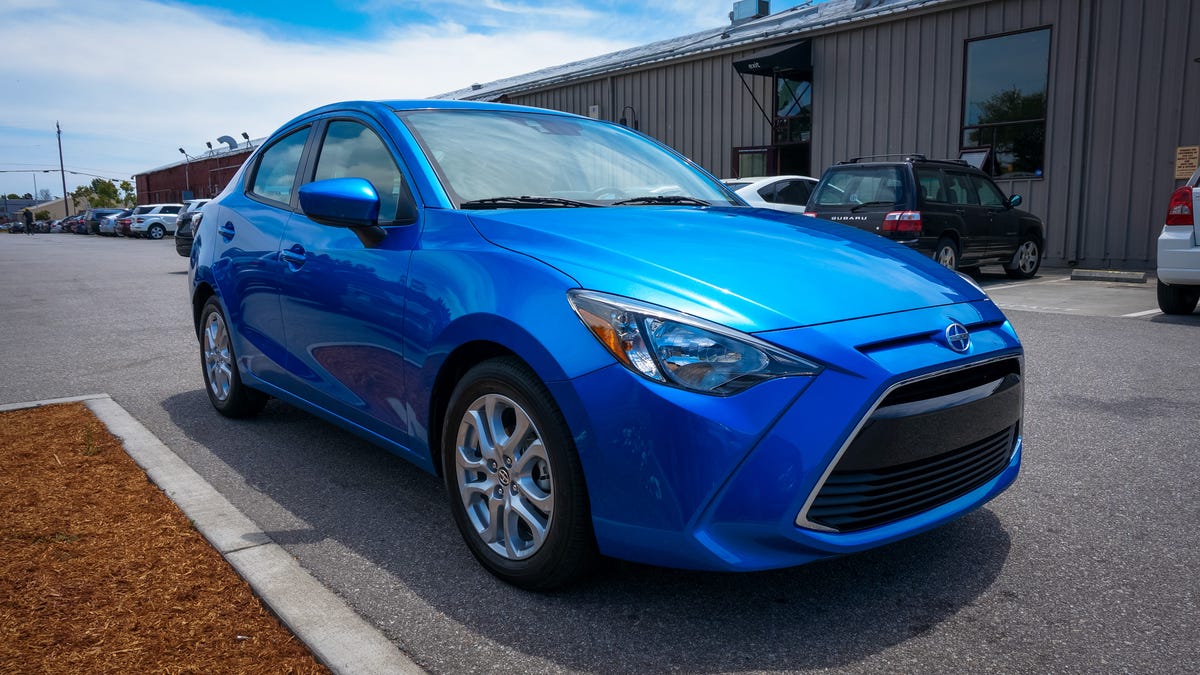On the road with Scion's 2016 iA and iM (photos)
We take to the Santa Cruz mountains in the two newest models in Scion's lineup.

2016 Scion iA
The 2016 Scion iA is the first sedan to wear the Scion badge. Starting at $15,700, it will also be one of the least expensive.
2016 Scion iA
It's no secret that behind that Scion badge is a car that was designed and built by Mazda.
2016 Scion iA
The iA separates itself from the Mazda2 upon which it is based with a Toyota designed front fascia and headlamp treatment.
2016 Scion iA
This is a face that only a mother could love, but for now it's the only way to experience the 2016 Mazda2's performance in the US.
2016 Scion iA
Under the hood, you'll find a 106 horsepower 1.5-liter engine.
2016 Scion iA
The owner will have to choose between an automatic or a manual transmission. Both feature six speeds.
2016 Scion iA
The iA rides on a MacPherson strut front suspension and a torsion beam rear axle.
2016 Scion iA
On the road, the iA is poised to be one of the best handling cars in its class.
2016 Scion iA
Standard 16-inch wheels fill the iA's wells.
2016 Scion iA
The cabin is identical to that of the Mazda2, save a few badge swaps.
2016 Scion iA
The iA's instrument cluster features a large analog speedometer flanked by smaller digital gauges.
2016 Scion iA
The tiny tachometer can be hard to see.
2016 Scion iA
Push button start and smart keyless entry are standard features.
2016 Scion iA
Infotainment is a sanitized version of Mazda Connect.
2016 Scion iA
The 7-inch screen is touch sensitive, but when the vehicle is in motion this physical bank is where infotainment control resides.
2016 Scion iA
The iA features a pair of USB ports, which makes up for its lack of a CD drive.
2016 Scion iA
Map data is stored on an SD card.
2016 Scion iA
The system is easy enough to navigate and more intuitive than Scion's own BeSpoke system.
2016 Scion iA
However, the non-standard screen placement means that the iA won't be as easily modified as the rest of Scion's lineup.
2016 Scion iM
The Scion iM is a world market import and another badge engineering job.
2016 Scion iM
In this case, the Scion is based on Toyota's own Auris hatchback.
2016 Scion iM
17-inch wheels are shod in 225mm wide tires.
2016 Scion iM
The iM also features a unique suspension tune and sport body kit to stand apart from its Euro-twin.
2016 Scion iM
This example has also been augmented with TRD lowering springs and anti-sway bars.
2016 Scion iM
Under the hood is Toyota's 1.8-liter engine that outputs 137 horsepower.
2016 Scion iM
This engine is an older design that uses port injection.
2016 Scion iM
A TRD oil cap doesn't add any performance, but looks pretty neat.
2016 Scion iM
I was disappointed to see that the TRD intake is merely an improved air filter in the stock airbox.
2016 Scion iM
Another disappointment was the six-speed manual transmission, which featured a ridiculously long throw on the shifter.
2016 Scion iM
I wasn't able to test the optional continuously variable transmission, but I suspect that this more efficient transaxle is the best choice for iM owners.
2016 Scion iM
Scion is aiming the iM at younger drivers who want the utility of a hatchback.
2016 Scion iM
Though spacious, the iM isn't much longer from nose to tail than the compact iA.
2016 Scion iM
The cabin was very quiet at cruising speeds; the fit and finish were also nice.
2016 Scion iM
Instrumentation is a simple bi-gauge setup with the automaker's first 4.2-inch color MID.
2016 Scion iM
Display audio is standard and features HD Radio and Aha app connectivity. The optional BeSpoke upgrade adds navigation.
2016 Scion iM
The iM was a competent driver, but I think the iA is definitely the more fun of the two.
2016 Scion iM
A rear camera is standard safety tech.
2016 Scion iM
The 2016 Scion iM starts at $18,460 for the manually shifted model.
2016 Scion iM
With the iA and iM, Scion is using its mono-spec approach. The only options given to the buyer are color and gearbox.
2016 Scion iM
The automaker will also be offering an array of dealer installed options and accessories, such as the TRD upgrades.

